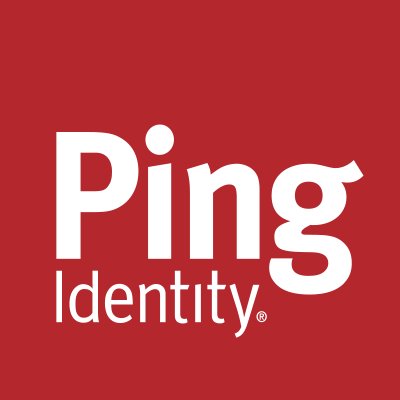IAM ensures proper access control for users and devices in an organization, protecting resources from unauthorized access.

Identity and Access Management (IAM) is a framework of policies and technologies that ensures the right individuals and devices have the appropriate access to resources within an organization. It involves managing digital identities, controlling user access, and enforcing security policies to protect systems and data from unauthorized access. IAM solutions help organizations streamline their operations by providing secure access to applications and data while ensuring compliance with regulatory requirements. By implementing IAM, businesses can reduce the risk of data breaches, improve operational efficiency, and enhance user experience through single sign-on capabilities and automated provisioning processes.
Focus on automating identity lifecycle management processes to improve efficiency and reduce administrative overhead. This use case involves streamlining the creation, modification, and deletion of user identities, ensuring accurate and timely updates to access rights.
Facilitate seamless user access across multiple domains using cross-domain single sign-on (SSO) solutions. This use case focuses on providing a unified authentication experience, reducing the need for multiple logins, and enhancing user convenience and productivity.
Integrate IAM solutions with DevOps tools to automate user provisioning and deprovisioning processes. This use case highlights the importance of seamless integration to enhance operational efficiency and reduce manual intervention in managing user access across development and operational environments.
Implement identity federation to provide unified access management across different systems and organizations. This use case focuses on enabling seamless collaboration and resource sharing while maintaining security and compliance standards.
Utilize risk-based authentication to enhance security by evaluating the risk level of each access attempt. This use case involves assessing various factors such as user location, device, and behavior to determine the appropriate authentication method, ensuring secure access while minimizing user friction.
Implement cloud-based solutions to manage identity governance and ensure compliance with regulatory requirements. This use case emphasizes the need for scalable and flexible governance frameworks that can adapt to the dynamic nature of cloud environments, ensuring secure and compliant access to cloud resources.
Employ identity analytics to predict and manage access requirements proactively. This use case involves analyzing historical and real-time data to anticipate user access needs, ensuring timely and appropriate access while minimizing security risks.
Leverage AI technologies to enhance identity verification processes and conduct comprehensive risk assessments. This use case focuses on using AI to analyze identity attributes and behaviors, providing a more accurate and dynamic risk assessment to prevent unauthorized access and ensure compliance with security policies.
Here is a comprehensive Workforce Identity and Access Management (IAM) requirements checklist you can use to further define your use case.
The platform should allow delegated administration to distribute administrative tasks and responsibilities across different users or groups.
The system should provide single sign-on (SSO) capabilities to allow users to access multiple applications with a single set of credentials.
The system should implement policy-based access control to manage access rights based on predefined policies and rules.
The platform should implement adaptive authentication to adjust security measures based on user behavior and context.
The system should support multi-factor authentication (MFA) to enhance security by requiring multiple forms of verification before granting access.
The tool should provide role-based access control (RBAC) to manage user permissions based on their roles within the organization.
The tool should incorporate user behavior analytics to detect anomalies and potential security threats based on user activity patterns.
The platform should support integration with third-party applications to extend its functionality and interoperability.
The platform should offer entitlement management features to control and track user access rights and permissions across the organization.
The platform should support identity lifecycle management to handle the creation, maintenance, and deletion of user identities.
The system should provide audit and compliance reporting features to ensure adherence to regulatory requirements and internal policies.
The system should implement privileged access management (PAM) to control and monitor access to critical systems and data by privileged users.
The tool should enable cloud-based identity management to facilitate secure access to cloud resources and applications.
The tool should provide dynamic authorization capabilities to adjust access permissions in real-time based on changing conditions.
The system should facilitate federated identity management to allow users to access resources across different domains using a single identity.
The platform should enable various options to allow users to access systems.
Here are some of the more popular Workforce Identity and Access Management (IAM) products.

ManageEngine AD360 is an integrated IAM solution for managing and securing user identities, offering identity governance and compliance.
WSO2 Identity Server offers comprehensive IAM solutions with strong SSO and identity federation capabilities.

Ping Identity offers robust IAM solutions for secure access to cloud, on-premises, and hybrid systems, enhancing security without compromising user experience.

JumpCloud offers cloud-native IAM with directory services and SSO, ensuring secure access from any location.

Saviynt Enterprise Identity Cloud offers holistic identity governance, cloud security, and access governance in a cloud-based solution.
Microsoft Entra is a comprehensive identity and access management solution, ensuring secure access to resources with advanced security features.

ForgeRock Identity Platform offers comprehensive IAM solutions, integrating access management for workforce, customers, and IoT devices.

Okta Workforce Identity offers robust IAM solutions with SSO, MFA, and lifecycle management for secure access.

SailPoint IdentityAI enhances identity governance with advanced analytics and risk-based insights, ideal for complex environments.

BeyondTrust Privileged Access Management offers detailed auditing and reporting for compliance, enhancing security with easy integration.

CyberArk Identity offers robust identity and access management solutions, enhancing security with features like single sign-on and multi-factor authentication.

PingOne is a cloud-based IAM solution offering secure access with SSO and MFA, ideal for hybrid environments.

SecureAuth Identity Platform offers robust IAM solutions with 25 multi-factor authentication methods, enhancing security for cloud and on-premise applications.

SailPoint IdentityNow is a multi-tenant IDaaS solution known for its strong access governance capabilities, ideal for complex environments.
Compare products in Workforce Identity and Access Management (IAM) head-to-head across various criteria such as price, features, user interface, support, ect.

Taloflow does not guarantee the accuracy of any information on this page including (but not limited to) information about 3rd party software, product pricing, product features, product compliance standards, and product integrations. All product and company names and logos are trademarks™ or registered® trademarks of their respective holders. Use of them does not imply any affiliation or endorsement. Vendor views are not represented in any of our sites, content, research, questionnaires, or reports.